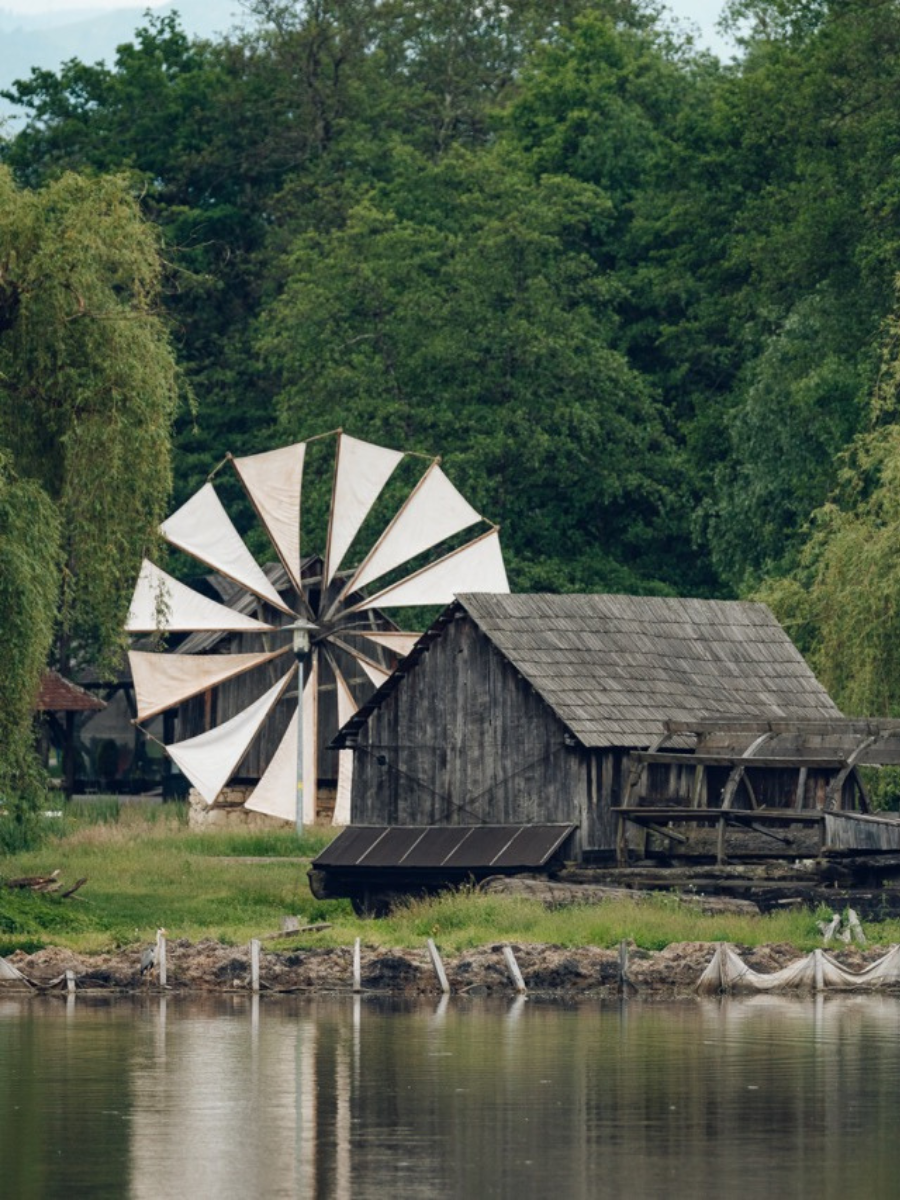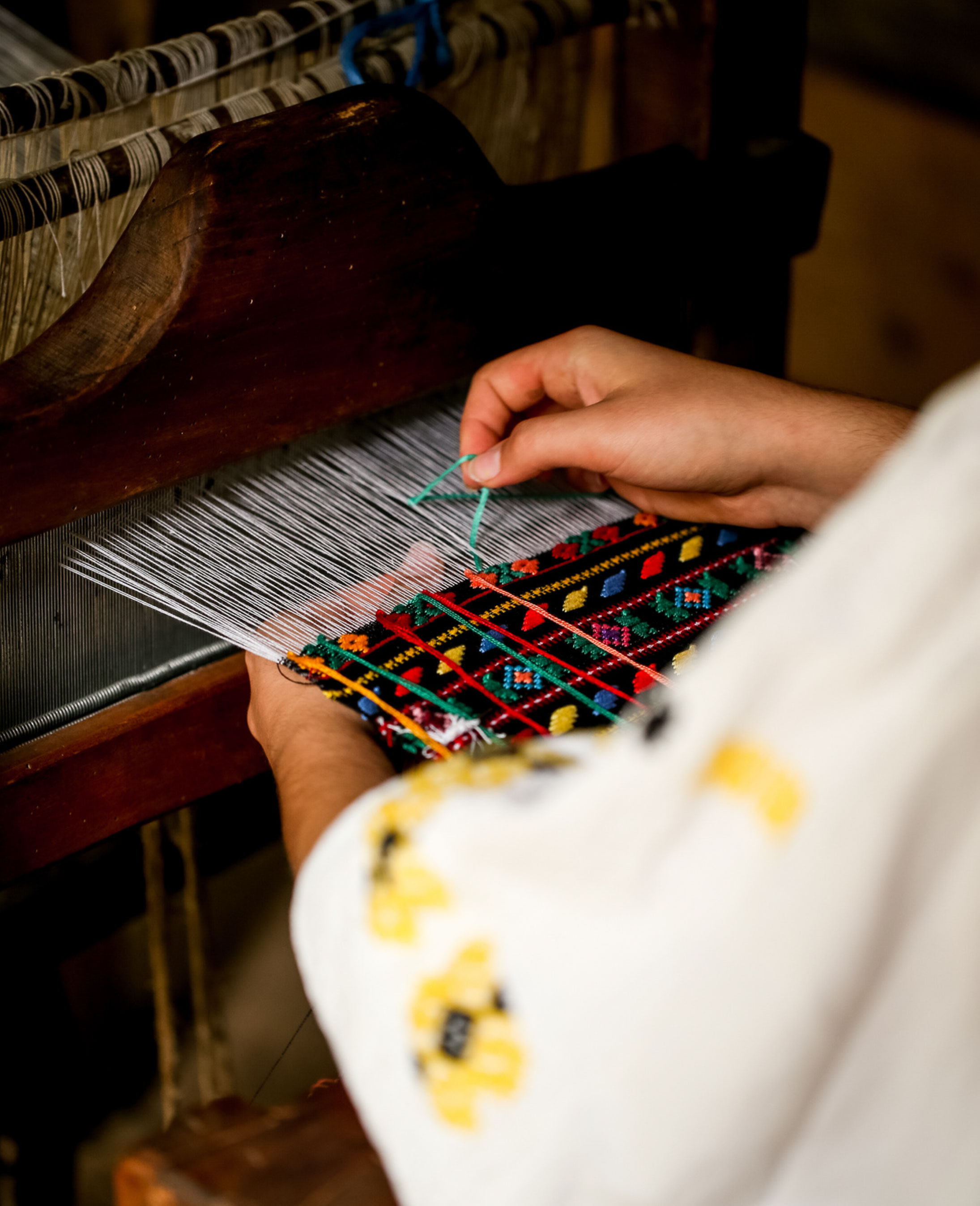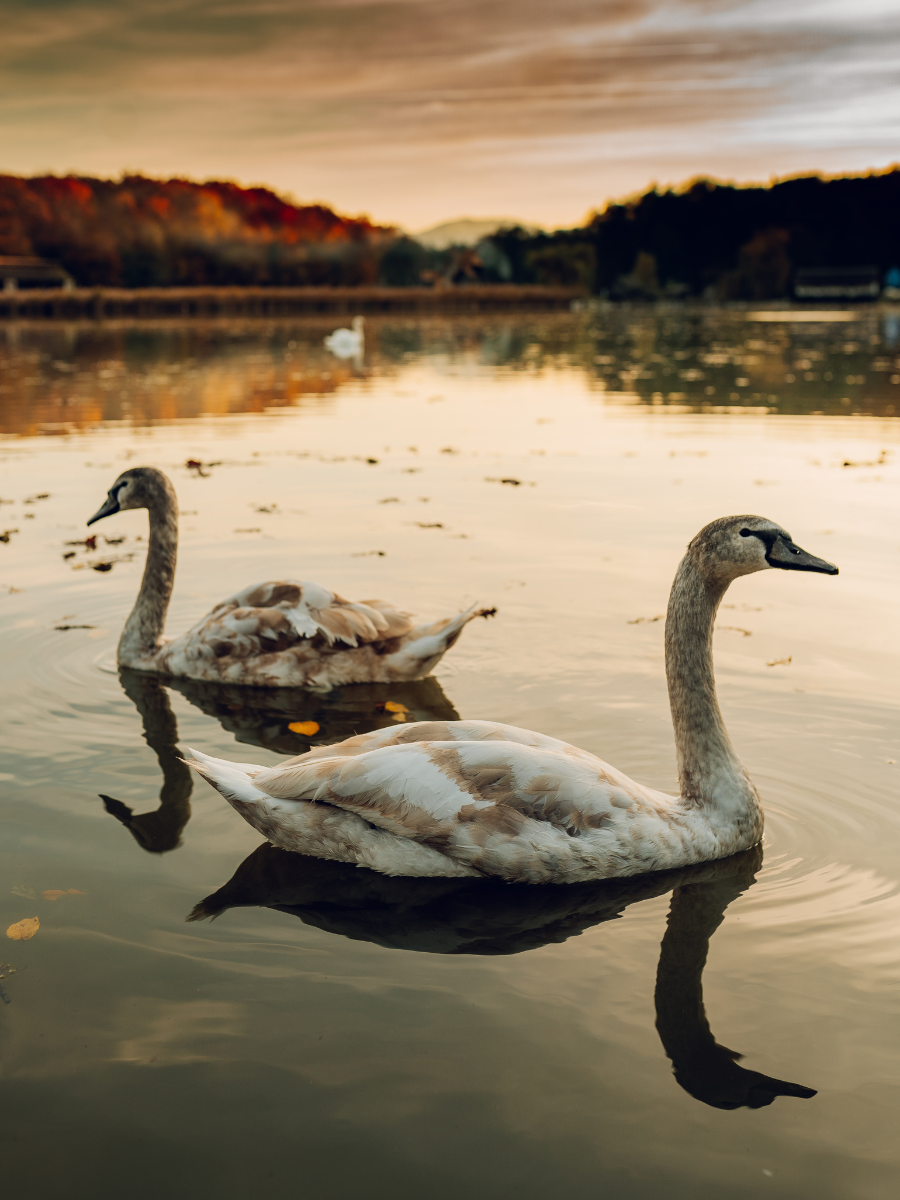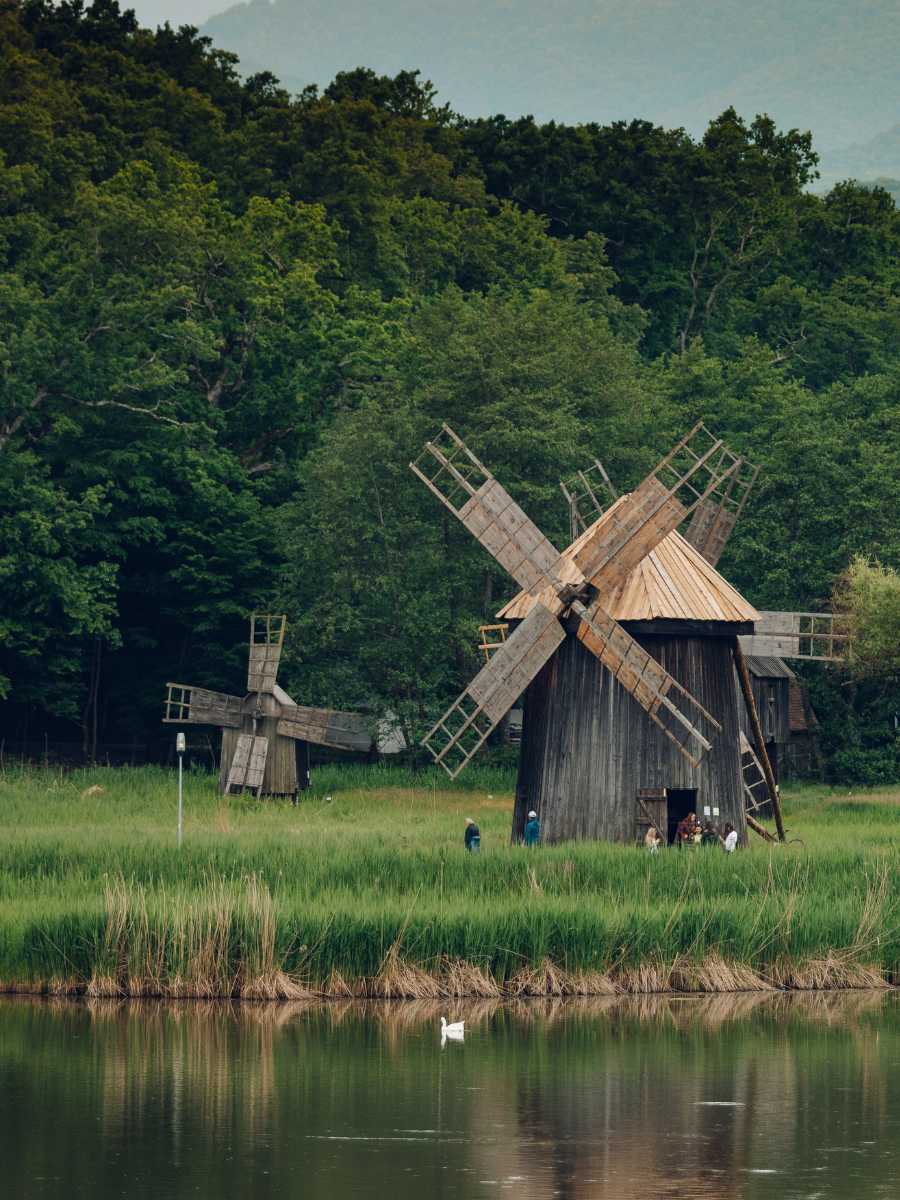ASTRA Museum Virtual Tour
Closer to you with a click!
You can take a virtual tour of the open-air museum, but we invite you to explore it, feel it and taste it in Dumbrava Sibiului!
Hidden Treasures
We invite you to find out the story of all the landmarks listed below that you can admire in the Open Air Museum from Dumbrava Sibiului.
The mill from Dăbâca village, Hunedoara county
The first monument reconstructed in the museum in Dumbrava Sibiului, in 1963, is the mill of Dăbâca, a hydraulic mill with lower adduction, a fascinating construction from the end of the 18th century, with a space for the grinding plant and another for the living room. The beams are carved in an old technique, almost extinct in Romania. The mill in Dăbâca, Hunedoara county, opens the museum's collection of mills, which has been developed over the years and is unique in Europe. This mill was the symbolic, representative element of the Museum of Folk Technology, being found in the museum's logo from 1963 to 1989.
The Molinological Collection
The molinological collection is unique, as the 33 grain mills present all known energetic types of mills in the Euro-Asian area, with the exception of "tide mills". The complexity of the collection lies in the diversity of energy and construction types. In the open-air museum there are hand, horse driven, water (one, two, three and six-gear) and wind mills, with fixed constructions on the ground, or floating on vessels, with direct transmission or with transmission gear (one-step or two-step), with horizontal or vertical wheels (single, double or triple), with all types of admission (lower, medium or upper), with plank or canvas wind wings, with the whole body of the construction pivoting or with only a movable dome ('Dutch' mills).
From the mulinological collection we highlight the following installations:
A Romanian invention, the Alvan mill from Sălaj, the horse mill from Timișș, the 6-shaft mill from Găleșoaia, the only one saved in the European context of milling installations of this type and the mill from Bumbuiești, operated by human power.
The floating mills at Luncăcești, Maramureș county and Munteni, Valcea county are unique at national level and among the few represented in European open-air museums. Not to mention the collection of windmills in Dobrogea, which capture the evolutionary stages in the construction of wind energy installations.
The House from Vlădești village, Vâlcea county
The house from Vlădești, Vâlcea county, dated 1837, can be found on the 10 lei bill. It strikes through its mortar-textured stone ground floor, small windows used for defence, and the multitude of decorated pillars on the porch. By the way, it's very Instagrammable.
The largest oak house in South-Eastern Europe
Where is the largest oak house in South-Eastern Europe? You guessed it! It is in the ASTRA Museum! It is the house from Almaș, Arad county, built 3 centuries ago, moved three times, as the village was also relocated. Inside the household, the pigsty presents two breeds of pigs, Magalița and Bazna, which introduce you to the atmosphere of the oldtime yards.
The Sistine Chapel of Wooden Churches in Romania
The Sistine Chapel of wooden churches in Romania, you can visit it in the pottery sector. It is the Church of Dretea, Cluj county, dated 1672, the oldest monument in the Open Air Museum's collection. It impresses with its harmonious proportions and the painting on a single piece of canvas on the nave wall in 1742.
HOUSE from DRAGU-BRAD, APUSENI MOUNTAINS
In the thematic sector dedicated to mining you can see a house built in 1957 using a technique specific to the 1850s. The house is from Dragu-Brad, a grove representative of the Apuseni Mountains, which was depopulated in the early 2000s. The interior of the house is atypically decorated with an installation illustrating the memory of the place, the people and the sustainable use of resources. A story waiting to be told!
The house of the richest Romanian in the Rosia Montana area
The house of the richest Romanian in the Rosia Montana area can be identified near the Ethno Techno Park area, we are talking about the house in Corna, Alba county, built in 1836, with a cold-built stone fence. It used stone from the gold mining at the shteamp, which you can see below the house. This is the Abrud shale field, where gold was mined from the rocks in the area.
House from Bălănești village, Gorj county
The house in Bălănești, Gorj county is unique in the context of European oak architecture. Built in the middle of the 18th century, it is a concrete example of sustainability and sustainable use of wood resources, by respecting simple rules related to cutting periods and working techniques. The L-shaped floor plan with three rooms demonstrates the ingenuity of the Gorjeni craftsmen, who inspired the great sculptor Constantin Brâncuși.






